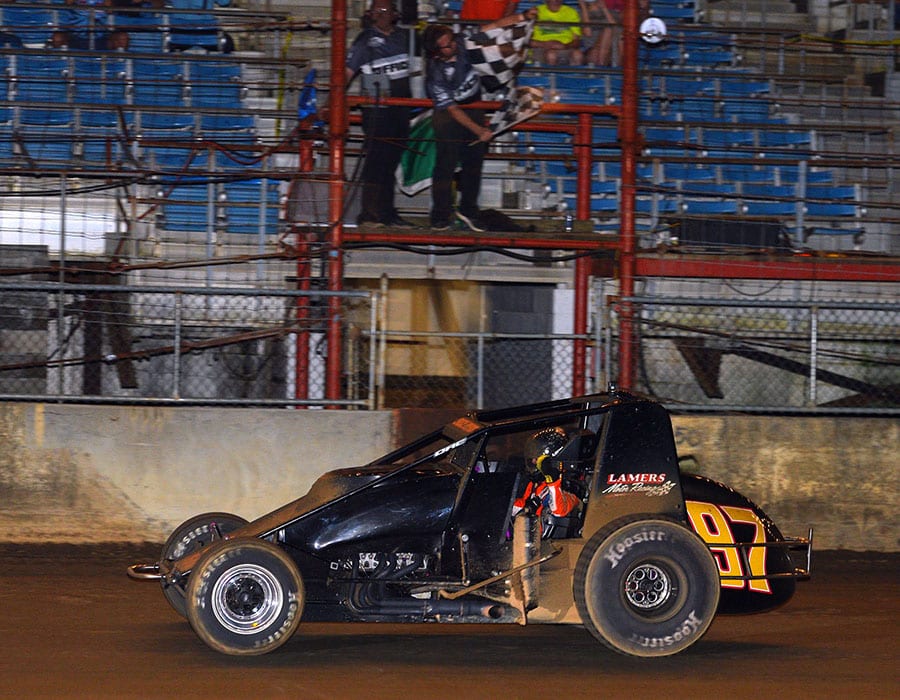On Thursday night, May 23, Tyler “Sunshine” Courtney drove around Kevin Thomas Jr. with eight laps remaining to win the Hoosier Hundred.
Besides honoring Courtney’s winning drive, the fluttering double checkered flags marked the last time the echo of booming racing engines would reverberate around the storied Indiana State Fairgrounds mile.
Like the many other fairgrounds dirt tracks that dotted the nation and became American auto racing’s foundation, the one-mile Indianapolis dirt track was originally intended for horse racing.
Built in 1892, its sulky racing drew standing-room-only crowds and captured the nation’s attention as Dan Patch, an extraordinary Hoosier-born, standard-bred horse, shattered world records and raced undefeated on the mile.

However, it wasn’t long before horsepower of a different sort laid claim to the track. In 1903, former bicycle racing champion Barney Oldfield took the tiller of Henry Ford’s thundering No. 999 and became the first man to cover a mile a minute on a closed course.
That remarkable event solidified Oldfield as the first superstar of the still new sport of auto racing. In the process, he also collected a $250 prize posted by Carl Fisher, who later founded Indianapolis Motor Speedway.
Ever the showboating marketer, Fisher frequently used the fairgrounds mile for publicity stunts and “speed records.” In 1905, Fisher was determined to go after a world record there.
He’d made his fortune with his Prest-O-Light Co. that produced acetylene-powered headlights for the majority of automobiles manufactured in the United States. To further publicize the company, Fisher and his Prest-O-Light business partner, James Allison, organized an assault on the 24-hour mileage mark for automobiles.
Prest-O-Light devices were strung every 25 feet around the track to light the way. The first known attempt at track lighting that, in the overblown parlance of the day, “Brightened the track like a midday sun.”
On Nov. 16-17, 1905, driving National automobiles, another Fisher friend, Arthur C. Newby, who was the company president, along with drivers Charles Merz and “Jap” Clemens, braved unseasonably cold temperatures and racked up 1,094.56 miles in 24 hours, setting the record.
With no pari-mutuel betting in Indiana, horse racing couldn’t sustain the crowds necessary for the track to turn a profit. Since Fisher’s events had generated so much excitement and interest, the fair board surmised that auto racing could be a perfect income generator.
Starting in the early 1900s on dozens of “outlaw” races and a diverse conglomerate of other motorized promotions kept the track busy.
The Hoosier mile became the home of a prominent event for African-American drivers. To organize drivers unable to compete with major racing organizations because of the “unspoken segregation” that was rampant in that day, a group of businessmen created the Colored Speedway Ass’n.
Click to the next page for the rest of the story.
